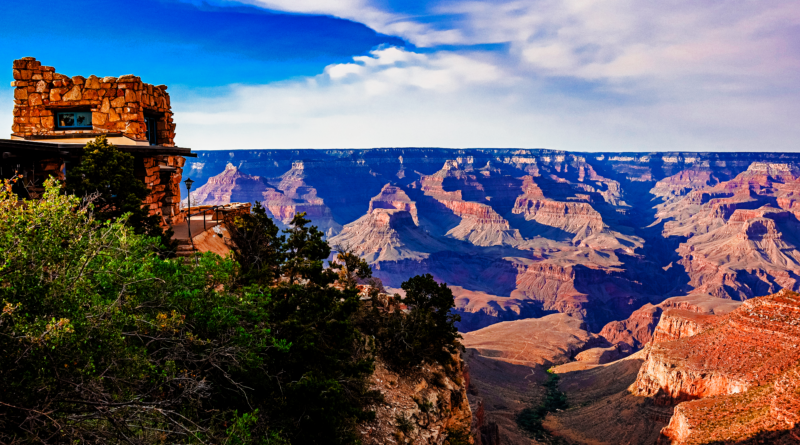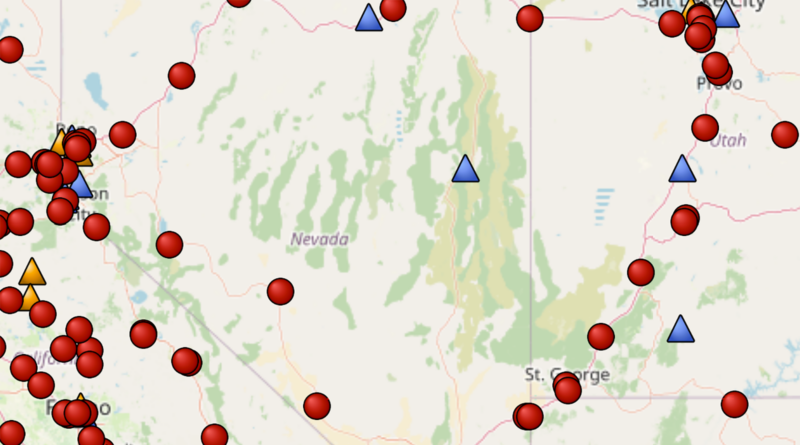The Great Basin (Including Its Only National Park) Is Going To Get Better EV Charging
“This region can be approached only from the south, and after entering it there is nothing to do but to leave. Ours has been the first, and will doubtless be the last party of whites to visit this profitless locality.” — Lt. Joseph C. Ives, referring to the Grand Canyon, 1858
The Changing Value of Public Lands in American Culture
The way Americans have looked at the value of land has changed a lot over time. Going back to the mid-nineteenth century, everyone was a lot closer to the edge of survival than we are today. It was a very real possibility to run out of food or water and die. Babies often didn’t survive to be a year old. If you spent too much time doing things that didn’t further your survival, you probably didn’t survive.
So it was tough for many people of Ives’ generation to really see the value of beautiful outdoor environments like the Grand Canyon. What we see today as a beautiful collection of scenic vistas, like a living painting you can visit and see something a little different each time, the lieutenant only saw as a barren patch of land that wasn’t good for improving anyone’s odds of survival. It couldn’t be farmed. It couldn’t give you water without a serious hike. Wagons and railroads couldn’t get through. That’s all he could see, and deemed it worthless not only to him, but to his entire race and civilization.

With industrialization, synthetic nitrates, irrigation and dams, and automation, our views of the land changed. Instead of worrying about the utility of a patch of land, we could instead start to see the value that native populations had seen in the area for tens of thousands of years. So we started to protect the most beautiful lands in the late nineteenth and early twentieth centuries.
This changing way of seeing the land didn’t happen all at once. Places like Yellowstone and the Grand Canyon got some protection first, and that protection has increased over time. More and more places got designated as state and national parks over the decades, along with monuments, historic parks, seashores, and more. This, of course, has been opposed at every turn by the utilitarians among us who only see the dollar signs that can come from extracting mineral wealth, often including fossil fuels, from these lands. This is an ongoing struggle, to put it mildly.
The Great Basin Was Seen As Only Fit To Be Nuked
One area that didn’t get much of a fair shake until very recently was the Great Basin. It’s actually a big collection of endorheic basins, or places where water flows into, but doesn’t flow out. These basins sometimes collect enough water for seasonal lakes, with a few shallow ones that survive year-round. The rest dry up, leaving the minerals and salt flats behind. Between the basins are tall mountain ranges, some that are dry deserts up to the peaks and others with patches of forest.
During the 19th and 20th centuries, this area wasn’t seen by many people as having any aesthetic value, so much of the desert floor was used for weapons testing (including decades of nuclear testing). Before that, the mountains were exploited by mining operations and the deserts were used by ranchers (some of whom got treated terribly when the government established places like Area 51).
Today, there’s still a lot of government land where secret weapons are tested, including the next generation of stealth fighter. Many believe that recovered alien spacecraft are hidden there, making small towns like Rachel, Nevada, a tourist attraction.
 Chip in a few dollars a month to help support independent cleantech coverage that helps to accelerate the cleantech revolution!
Chip in a few dollars a month to help support independent cleantech coverage that helps to accelerate the cleantech revolution!
Increasing Appreciation For The Great Basin
While much of the Great Basin is still as dry and dusty as it has been since the end of the last glacial period (popularly but wrongly called the “ice age,” because we’re technically still in an ice age), people are starting to see more than dollar signs in it.
For example, it was only in 1994 that Death Valley National Park (at the edge of the Great Basin) became a national park. It was also in the 1990s that the Burning Man festival started to be held in the Black Rock Desert, north of Reno. Only a few years earlier, in 1986, Great Basin National Park was established near the Utah-Nevada state line, just west of Baker.
For decades, Lehman Caves National Monument had protected some caves in the Snake Range, but eventually most of the range was protected either as a national park or a wilderness area. Visitor numbers are still pretty low compared to places like the Grand Canyon and Yosemite, but the park’s mountain greenery from which you can see vast swaths of desert floor is attracting more and more people.
Another valuable thing people are finding in the area is darkness. With light pollution having ruined the view of the Milky Way in much of the United States, places like Great Basin National Park and nearby Ely, Nevada, are becoming valuable refuges from the light where the stars can be seen in all of their glory. There’s even a train people can ride from Ely where you can get a tour of the night sky from park rangers.
Getting Out There Is Tough For EVs, But It’s Getting Better
In recent years, Nevada has actually built what looked like an impressive EV charging network in the Great Basin. While nearby states like Arizona, Utah, and New Mexico left vast areas without charging coverage, chargers started popping up all over the map in Nevada. But, the quality of those charging stations is pretty mixed.
If you look at many of the charging stations away from the interstates and Las Vegas, few of them have a 10 rating on Plugshare, and some are pretty far from getting a 10. Near Great Basin National Park, you can probably get a charge at the Border Inn Casino’s Shell Recharge station, but you’ll probably not be able to get one at Shell’s other station in Ely.
But Tesla’s supercharger network is slowly expanding into the area. These generally get a good rating, have more stalls, and have charging speeds better than the 50 kW many of Nevada’s CCS and CHAdeMO stations provide. One of these stations is an upcoming V3 Supercharger in Ely that will be NACS compatible and serve most brands of EVs sometime this year at up to 250 kW.
There’s still a lot of work to do in the area, as this will be the only Supercharger for quite a ways. But, as Tesla puts in more Superchargers and other providers hopefully clean up their stations, it will become a lot easier to visit not only the Great Basin National Park, but the rest of the Great Basin’s natural beauty (or aliens, if you believe in that).
Featured image: A screenshot from Supercharge.info showing the upcoming Ely, Nevada station (the blue triangle in the center)
Have a tip for CleanTechnica? Want to advertise? Want to suggest a guest for our CleanTech Talk podcast? Contact us here.
Latest CleanTechnica.TV Videos

CleanTechnica uses affiliate links. See our policy here.


